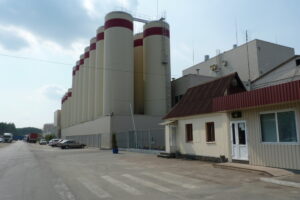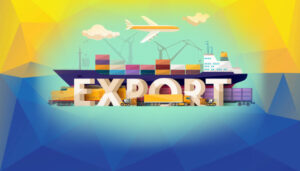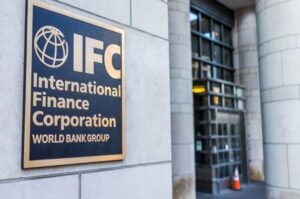
The Radomyshl Brewery PJSC (Radomyshl, Zhytomyr region), which is part of the Persha Privatna Brovarnya group of companies, increased its net loss in 2022 by 57.3% compared with the previous year, to UAH 149.42 mln.
According to the company’s notice in the information disclosure system of the National Securities and Stock Market Commission (NSSMC) about the planned annual meeting on April 28, its assets for the year increased by 23.9%, to UAH 3.82 billion, and the uncovered loss increased by 7.2%, to UAH 2.23 billion.
Total accounts receivable of the plant increased 16.5% during the year, to UAH 1.85 billion, long-term liabilities increased 20.7% to UAH 1.43 billion, and current liabilities increased 21.6% to UAH 3.62 billion.
The company increased its inventory by 57% to UAH 0.72 bln and had UAH 17.2 mln of free cash at the end of the year.
The shareholders are not allowed to pay out dividends and will have to repay their losses at the expense of future profits.
As earlier reported, Persha Privatna Brovarnya LLC was founded in 2004. It operates two breweries – in Lviv and Radomyshl with a total capacity of 2.4 million hectoliters of beer per year.
According to the PPB website, the largest shareholder of the company and its CEO is Ukrainian Andrey Matsola, while the second largest stake belongs to the EBRD. The rest of the shares are distributed among Oettinger concern and the managing partners of OASIS group.
The company’s brand portfolio includes beer brands Avtorskoe, StareMisto, Zhiguli Barne, Oettinger, CervenaSelka, Bavaria, Galitskaya Korona and others, as well as two kvass brands Lvovsky and Drevlyansky.

The volume of marketable products of Kyivsky Cardboard and Paper Mill (Obukhiv, Kyiv region), the leader of the Ukrainian industry in this indicator, in January-March 2023 amounted to UAH 1.862 billion, and it was 27.2% more than in the first quarter of 2022.
According to the statistics of the UkrPapir association, provided to Interfax-Ukraine, in this way, the mill, following the results of the quarter, moved to a significant positive dynamics in the increase in production volume (according to the results of January-February, there was a decrease by 2.6%), primarily due to low the comparative base of March 2022 – the first full month of the full-scale aggression of the Russian Federation against Ukraine.
In kind, in March 2023, the production of corrugated boxes rose by 3.7 times compared to March 2022, to 16.9 million square meters, paper and cardboard 3.6 times, to 18,600 tonnes.
With the outbreak of the full-scale war in Ukraine, the mill suspended production, but resumed it in March 2022.
Taking this into account, according to statistics, in January-March of this year, the production of corrugated boxes at the mill grew by 54.6%, to 52.34 million square meters. The output of cardboard rose by 26.2%, to 43,920 tonnes, due to the increase in the output of containerboard by 53.6%, to 36,380 tonnes, while the output of boxboard dropped by 32%, to 7,540 tonnes.
At the same time, the production of base paper for sanitary and hygienic purposes retains a downward trend, although it has slowed down – in January-March it fell by 31% to 10,220 tonnes, while the production of toilet paper in rolls fell by 29%, to 56.54 million.
The mill, despite the reduction in the production of toilet paper, retains leadership in its production in Ukraine: in general, in the first three months, the main enterprises of the industry produced 87.72 million rolls (10% less).
According to the statistics of the profile association received from industry enterprises, in total, in January-March 2023, they produced 131,560 tonnes of paper and cardboard, which is 12.4% more than in the first quarter of 2022, and 115.24 million square meters of cardboard boxes – 23.4% more.
At the same time, in March, the production of corrugated boxes grew by 2.5 times compared to March 2022 to 36.74 million square meters of paper and cardboard three times, to 44,240 tonnes.
Kyivsky Cardboard and Paper Mill is one of the largest enterprises in Europe for the production of cardboard and paper products with a staff of about 2,500 people.
Pulp Mill Holding (Austria) owns 100% of the company’s shares.

Ukraine in January-March this year exported 99 tonnes of pork, which is 54.7% more than in the same period last year (64 tonnes).
According to customs statistics, in monetary terms, the export of these products for the first quarter increased by 3.5 times – up to $274,000 ($78,000 in the first quarter of 2022).
Pork imports in January-March 2023 decreased by 4.3 times – to 3,162 tonnes from 13,746 tonnes, and in monetary terms, the decline was four times – to $6.291 million.
At the same time, according to customs statistics, the supply of poultry meat and offal abroad in the first quarter of 2023 increased by 20% – up to 104,121 tonnes, and in monetary terms, the growth was 3.5% – up to $180.022 million.
During this period, imports decreased in physical terms by 22.3% – to 15,482 tonnes, in monetary terms – by 28.2%, to $8.372 million.
Ukraine in 2022 reduced the supply of pork to foreign markets by 13 times – to 293 tonnes, while imports of this product amounted to 46,934 tonnes (an increase of 15.5%).
In 2022, the country reduced the export of poultry meat and offal by 10%, to 413,197 tonnes. Imports of these products decreased by 37.6% compared to 2021, to 74,746 tonnes.

The net inflow to Ukraine during the week of April 8-14 decreased from a record 97 thousand people a week earlier to 56 thousand, which is also very high and can be explained by the Easter holidays.
According to the State Border Service on Facebook, the flow to leave Ukraine during that week slightly increased – from 241 thousand to 246 thousand people, while the flow to enter decreased from 338 thousand to 302 thousand people.
The number of cars crossing the western Ukrainian border, according to the department, in the 15th week of the year decreased from 132 thousand to 123 thousand, and the number of vehicles with humanitarian cargoes, from 522 to 459.
The biggest net inflow to Ukraine – more than 10 thousand people per day – was fixed on Friday and at week-ends.
Polish State Border Service also recorded a decrease in the net inflow to Ukraine for the last seven days – 49.4 thousand people compared to 87.7 thousand a week earlier.
According to the Polish Ministry, the weekly flow from Ukraine to Poland increased from 155.3 thousand people to 157.3 thousand, whereas the return flow from Poland to Ukraine decreased from 243 thousand people to 206.7 thousand.
All in all, from the beginning of the war to April 14, 2023, 11,107 million people arrived in Poland from Ukraine, whereas 9,375 million people went in the opposite direction.
As it was reported, since May 10, 2022, the outflow of refugees from Ukraine was replaced by an inflow, which lasted until September 23 and amounted to 409 thousand people.
However, during the last week of September, the net outflow was 28 thousand people at once, and one of the possible reasons was a reaction to mobilization in Russia and “pseudo-referendums” in the occupied territories, and then the probable reason for the continued net outflow was the massive shelling of energy infrastructure. It temporarily stopped in the second half of December and early January for the period of holidays, but from the second week of January it resumed again and cumulatively reached 223 thousand people by the anniversary of the full-scale war since late September.
However, since that moment 186 thousand more people entered Ukraine than left.
As Deputy Economy Minister Sergei Sobolev noted in early March, the return of every 100,000 Ukrainians home gives a 0.5% increase in GDP.
According to UNHCR data as of April 11, a total of 20.42 million people left Ukraine since the war began (not including the flow of people into the country), of which 10.75 million left for Poland, 2.85 million for Russia (data as of October 3), 2.49 million for Hungary, 2.21 million for Romania, 1.30 million for Slovakia, 0.80 million for Moldova and 0.02 million for Belarus.
At the same time, according to the UN, from February 28, 2022 to April 11, 2023, 11.89 million people arrived in Ukraine (excluding the data of Hungary, Russia and Belarus).
The number of Ukrainians registered in Europe with temporary protection status or similar reached 5.038 million on April 11, increasing by 11 thousand during the week.

A $2 billion IFC program designed to ramp up support for Ukraine’s private sector and boost economic resilience amid Russia’s invasion of Ukraine is receiving new financial support from the Netherlands and Switzerland, IFC has said.
“The Netherlands will be providing $43 million to support Ukraine’s agricultural sector and ensure emergency liquidity for private companies in critical agri-related industries. Switzerland will provide $11 million to support Ukraine’s small-scale farmers,” IFC said in the press release.
IFC said that Ukraine’s private sector generated up to 70% of gross domestic product before Russia’s invasion and provided crucial jobs, goods, and services. In spite of one in five micro and smaller business closing (as of mid-April 2022), the sector continues maintaining strategic exports and providing taxes.
The private sector will also have a crucial role to play in the country’s reconstruction efforts, estimated at $411 billion as of February 2023 – far more than government and donors can muster alone, the corporation said.
“A strong private sector is essential to help Ukraine’s economy recover and support reconstruction efforts. We welcome the contributions made by the Netherlands and Switzerland and their strong support for Ukraine. Ukraine’s economy remains on life support, and we will continue working with other development partners to provide the guarantees and grants the private sector needs,” IFC’s Managing Director Makhtar Diop said in the press release.
IFC recalled that IFC’s $2 billion Economic Resilience Action (ERA) response package includes finance from IFC’s own account working alongside guarantees and concessional finance (or grants) from donor governments. It complements efforts IFC has made with its own capital to support the private sector in Ukraine without donor support. As of April 2023, IFC’s outstanding portfolio was nearly $300 million to private companies and financial institutions in Ukraine.
IFC expects to be able to leverage these donor funds from the Netherlands and Switzerland between 3-4 times, meaning these contributions can potentially support over $200 million of financing.

Prime Minister of Ukraine Denys Shmyhal, following the results of the Spring Meetings in Washington (the United States), announced that Ukraine would receive additional support of more than $5 billion from France, Germany, and the UK.
“Following the results of negotiations with the finance ministers of the G7 countries at the Spring Meetings, we received assurances of additional support of more than $5 billion for Ukraine. In particular, we agreed on additional support packages with France, Germany, and the UK,” Shmyhal told reporters at a briefing in Washington.
According to him, Switzerland will also provide Ukraine with CHF 1.8 billion over the next six years. And Denmark, in turn, creates a special fund and plans to fill it with EUR 1 billion.
In addition, Spain, Ireland, Japan, Lithuania, Latvia, Iceland, and the Netherlands will provide additional support to Ukraine.
“All this will help win and ensure the resilience of our economy,” the Ukrainian prime minister said.
As reported, Shmyhal met with the finance ministers of the UK, Germany, and France on the sidelines of the Spring Meetings in Washington. At the meeting, the head of government raised issues of financial support for Ukraine and interaction within the Multi-agency Donor Coordination Platform.
Germany will provide more than EUR 3 billion in additional funding this year and more than EUR 5 billion in long-term defense support.
France also plans to provide EUR 2 billion as part of long-term financing.